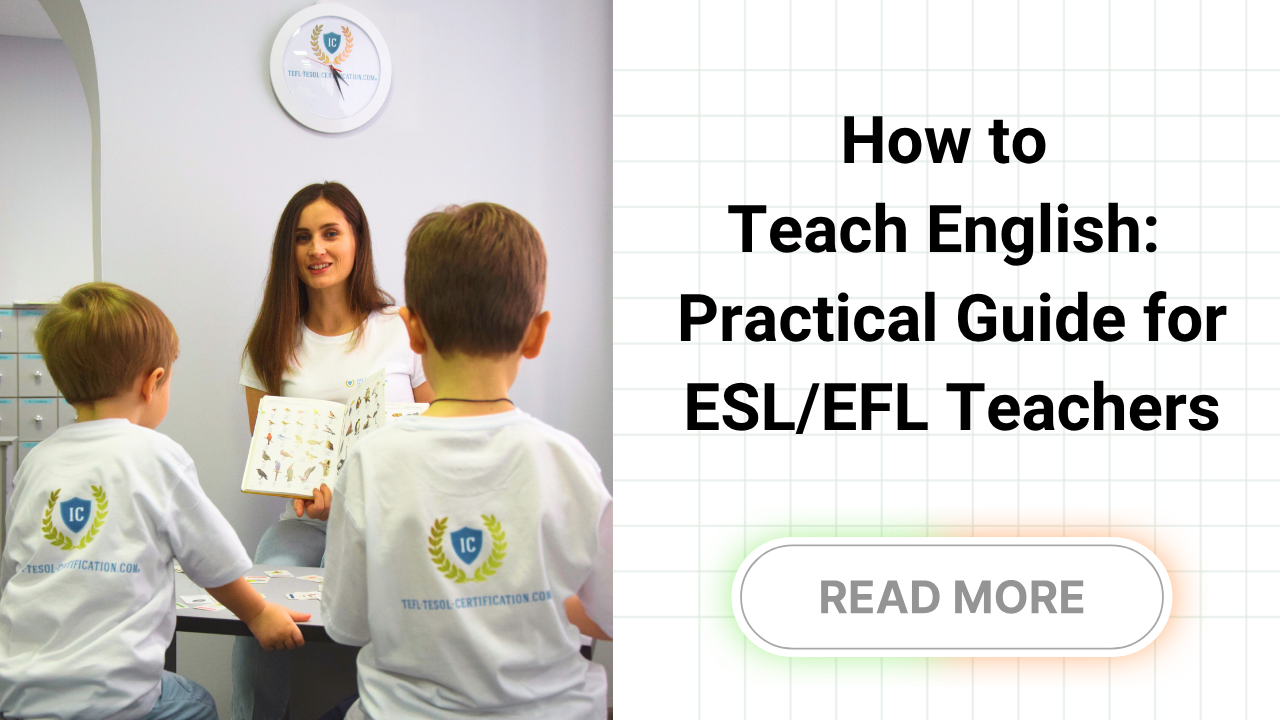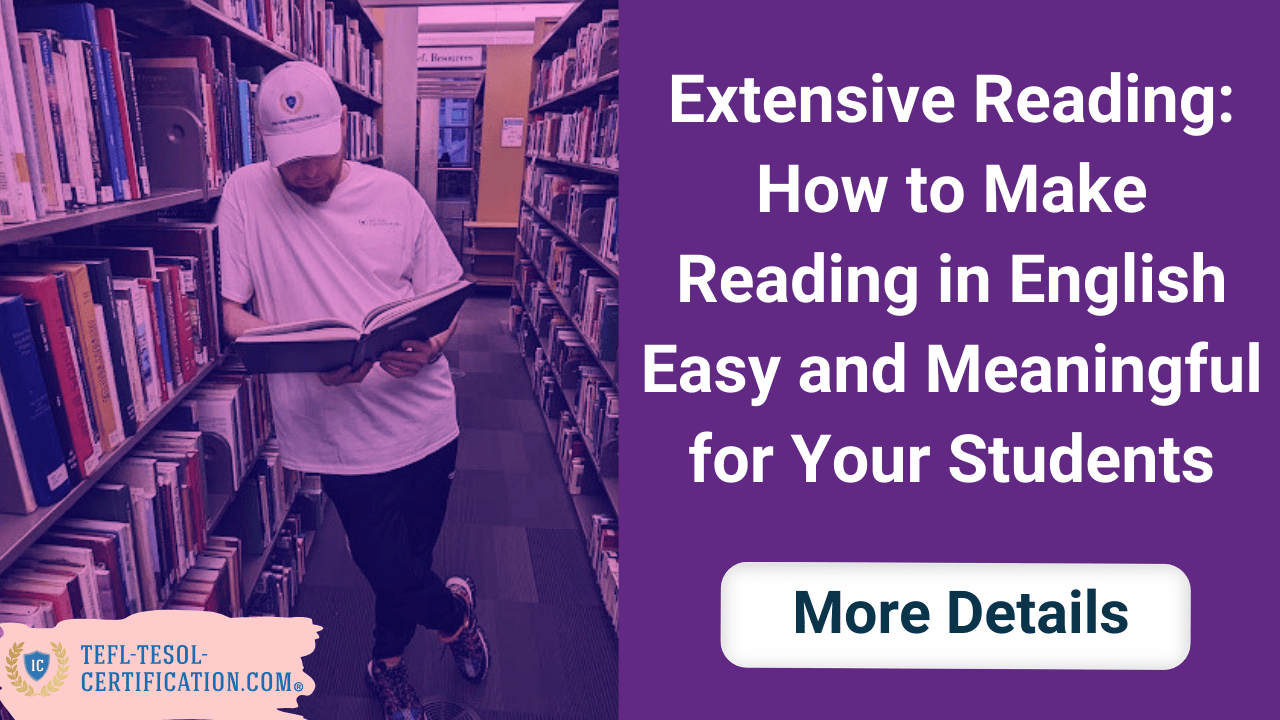💡 Unlock the secrets to doubling your teaching income with our exclusive checklist! 🎯 This checklist is designed for English teachers who want to 📈 attract more students and 🔥 keep them engaged for the long term.
Table of contents
- Checklist: From Idea to Lesson Optimization
- Who I Am (EEAT)
- How to Teach English from Zero: Where the System Starts
- English Lesson Structure: ESA with Working Blocks
- English Teaching Methodology—Made Simple
- Teaching Pronunciation without Fear
- How to Teach English Online: A Simple Ecosystem
- Working Lesson Plans: A Minimal Template
- Error Correction & Feedback
- Assessing Progress: How to Know Lessons “Fly”
- Materials & Topics: Where to Find “Living” English
- Teaching Children & Teens
- Teaching Business English to Adults
- Career Growth for Teachers: TEFL/TESOL & Mentored Practice
- FAQ I Hear from Colleagues
- First 90 Days: Teach English without Drowning in Prep
- Teacher Toolkit: Minimal Documents
- Classroom Management: Dynamics, Noise, and “Short Arms”
- Level-Based Task Starters
- Common Beginner Mistakes & Fast Fixes
- Teacher Talk: Time-Saving Classroom Phrases
- Mixed-Ability Classes: Practical Differentiation
- From Quiet to Speaking: A Story
- 15-Minute “Emergency” Lesson Prep
- One-Month Teacher Growth Plan
- Conclusion: Teach English—and Enjoy the Process
How to teach English—this is the question I hear most often. In short, it’s a blend of sound methodology, empathy, disciplined routines, and honest lesson analysis. Below is my practical pathway from first classes to a confident system where how to teach English becomes a craft—and a joy. 😊
Checklist: From Idea to Lesson Optimization
Use this working checklist to plan a course, a lesson series, or even polish an article before publishing.
- Needs & context: who your learners are, goals, timelines, and level (beginner, intermediate, upper-intermediate).
- Structure: break the topic into logical blocks and set measurable lesson objectives.
- Materials: select texts/videos/tasks and map them to three lesson phases (Engage — Study — Activate).
- Lesson plan: timing, instructions, concept checks, options for stronger/weaker learners.
- Delivery & observation: fewer hints, more practice and spontaneous speaking.
- Reflection & iteration: what worked, where the “noise” was, what to trim or amplify; update the plan.
Ready to turn this into high-talk-time lessons where students speak more than the teacher?
Who I Am (EEAT)
I’m York Fern. I’ve spent 12+ years in the ESL/EFL profession teaching everyone from children to senior managers. My learners have moved abroad for work, passed IELTS, and entered graduate programs. I began with a shaky voice and a notebook lesson plan, but systematic methodology brought freedom and confidence. A solid TEFL/TESOL foundation underpins everything I do.
How to Teach English from Zero: Where the System Starts
1) Define the goal—concretely
“I want to understand TV shows” is not a goal. “In 8 weeks, watch YouTube interviews without subtitles and deliver a timed summary” is. Precision makes materials and success criteria obvious.
2) Run a compact diagnosis
Do a short needs analysis (goals, themes, blockers) and a 10–15 minute placement for speaking, vocabulary, grammar, and pronunciation. Capture 2–3 strengths and 2–3 risks—build your first module around them.
3) Plan in modules, not one-off lessons
Think in 4–6-lesson cycles: one topic, one “big” task (e.g., “prepare a pitch-presentation”). Each lesson becomes a step toward a visible outcome.
- Cycle outcome: demo presentation / mini-project / client email.
- Metrics: speech rate, structural accuracy, topic lexis, self-assessment.
- Reflection: “What worked for me? What will I tweak next time?”
English Lesson Structure: ESA with Working Blocks
I mostly use ESA: Engage to spark interest; Study to clarify form/meaning; Activate to drive lots of practice. Here’s the skeleton:
| Stage | Purpose | Sample actions |
| Engage (5–8 min) | Warm emotion & context | Prompt image/clip, quick “Has this happened to you?” question; 3–5 target words |
| Study (15–20 min) | Clarify form/meaning | Pattern discovery, error highlighting, short pair drills |
| Activate (20–25 min) | Launch tasks & speaking | Role-play, discussion, project, audio recording |
Aim for learners to speak 60–70% of the time. Keep instructions tight, examples clear, and feedback targeted. “Less lecturing, more life.”
And start earning money 💸 by teaching English in your own country, abroad, or online from anywhere on the planet! 🎁 Gifts and bonuses: professional support from your personal coach 🧑🏫 and job placement assistant 💼.
English Teaching Methodology—Made Simple
PPP, ESA, or TBL?
PPP (Presentation–Practice–Production) fits structural grammar. ESA is a flexible daily frame. TBL (Task-Based Learning) shines with adults and business needs where communication is king.
- My blend: start with ESA, present specific grammar via PPP, and close a module with TBL tasks (presentations, negotiations, interviews).
- Golden rule: less exposition, more doing. Move theory into speech immediately.
Explaining Grammar without the Yawn
Skip heavy terminology. Lead with meaning and context, then give a crisp form. Instead of “Present Perfect is…”, say: “You’re reporting a result relevant now: I’ve finished.” Follow with three learner-relevant examples.
Vocabulary: From Lists to Active Use
Teach collocations and lexical sets so speech flows: not just make/do, but make a decision, do research. Reinforce with spaced repetition and short “in-the-wild” tasks between lessons.
Teaching Pronunciation without Fear
Prioritize sentence stress and connected speech over “perfect sounds.” Start with contrasts (thought vs though, ship vs sheep, can vs can’t) and quickly move to rhythm: record → listen → note → repeat. The goal is clarity, not native-like imitation.
- Trick: mark stressed words and read “in waves”—instant naturalness.
- Mini-dialogue: “What if a student is shy?” — “Normalize mistakes and use a funny tongue-twister or two. Laughter loosens jaws.”
How to Teach English Online: A Simple Ecosystem
Online isn’t slides + silence. It’s a tight script, activity shifts every 7–10 minutes, and lots of pair work. Keep the stack lean: video call, shared doc, homework tracker. Less friction, more language.
- 7-minute rule: rotate modality: speaking → reading → writing → listening → game.
- Instruction templates: short, active voice; one verb = one action.
- Asynchronous add-ons: micro video/audio tasks so English lives daily.
Working Lesson Plans: A Minimal Template
- Objective: “By the end, the student can…” (measurable).
- Lead-in: 2–3 image/situation questions.
- Language focus: form + meaning + pronunciation.
- Controlled practice: short dialogues/gap-fills/transforms.
- Freer practice: role-play/discussion/mini-project.
- Feedback: highlight 2–3 wins and 2–3 priority fixes.
- Homework: one task that directly moves the target skill.
Secret: one objective, one key pattern, one definitive outcome. The lesson clicks like Tetris.
🚀 More students, 💰 higher income, 🌍 complete freedom! ✅ 112 verified platforms with top rates ⏳ Flexible schedule – work whenever and as much as you want 🎯 Simple requirements – start earning right away 💎 Boost your career and income by teaching students worldwide!
Error Correction & Feedback
Ask: Does this error block understanding? If yes, address immediately but gently—recast on the board, highlight the pattern, reuse learner’s words. If no, bank it for Delayed Feedback grouped by grammar, lexis, pronunciation.
- Code: G (grammar), V (vocabulary), P (pronunciation) saves time.
- Self-repair: “Want to try that again?” beats supplying the answer.
- When learners want “more rules”: give one rule, three examples, and push to practice.
Assessing Progress: How to Know Lessons “Fly”
Use a light dashboard: cycle objective, checkpoints, and short performance tasks (email, call, presentation). Track growth along accuracy, fluency, and confidence. Confidence is measurable: time-to-first-word, pause count, willingness to clarify.
- Rubric 1–5: criteria visible upfront; learners see where to climb.
- Mini-portfolio: every 4–6 weeks, collect audio/video/texts—more motivating than numbers.
Materials & Topics: Where to Find “Living” English
The best material serves the learner’s real-world task: news, podcasts, slide decks, client emails—anything goes once you adapt it: cut noise, highlight lexis, and bolt on practice. Rotate life/work/culture/travel/soft-skills themes.
- 70/30 rule: 70% active practice, 30% input & analysis.
- Lexical growth: concept maps with 10–15 collocations & phrasal verbs per cycle.
- Pronunciation in context: 2–3 rhythm-rich lines to record-listen-repeat.
Teaching Children & Teens
Prioritize pace and game flow. Rotate stations: reading → game → creative task → movement. Rule: “one task—one page/screen” to contain attention. Shorter lessons, higher intensity.
- Token/mission system: consistent motivation without sugar-coating.
- Entry routine: greeting, date, objective—kids love clear structure.
- Tactile detail: textured sticker cards to “catch” new words—small touch, big effect.
Teaching Business English to Adults
Focus on tasks: emails, calls, presentations, negotiations. Task-Based Learning fits perfectly: start with a goal, model useful language briefly, then drill in “work-realistic” scenarios.
- Monthly plan: 1 flagship project (presentation/report) + 4 micro-tasks (email, call, small talk, follow-up).
- Language polishing: business collocations, politeness formulas, discourse “bridges.”
- Feedback: record a 2-minute pitch at the start and end—before/after is powerful.
Career Growth for Teachers: TEFL/TESOL & Mentored Practice
My first TEFL made everything easier: ready templates, clear criteria, and community. Whether formalizing experience or starting from scratch, pick a program aligned to your goals—120 hours for baseline; extend with online teaching or business English tracks as you specialize.
FAQ I Hear from Colleagues
- “Where do I start with zero experience?” Complete a core TEFL/TESOL module, take 2–3 trial learners, keep a lesson/error journal.
- “How do I avoid burnout?” Plan in cycles, protect quiet windows, and run mini-projects that energize you.
- “What about quiet groups?” 60–90-second pair micro-tasks followed by fast share-outs; volume rises naturally.
First 90 Days: Teach English without Drowning in Prep
- Weeks 1–2: set foundations. Define your audience, build a mini-portfolio (two A2/B1 lessons), complete an intro TEFL/TESOL module.
- Weeks 3–4: first paying learners. 2–3 lessons/week, collect feedback, adjust plans.
- Weeks 5–8: systematize. Ready-to-run sequences for 6–8 lessons, templates for emails/homework, progress tracker.
- Weeks 9–12: specialize. Choose a niche—young learners, business English, conversation, exams—and add a demo project.
After three months, prep gets lighter, referrals appear, and “how to teach English” feels calm and confident.
Teacher Toolkit: Minimal Documents
- Lesson Prole: objective, materials, timing, instructions, likely pitfalls.
- Progress tracker: cycle goals, checkpoints, notes on language.
- Task bank: 10 go-to grammar tasks, 10 lexis tasks, 10 speaking tasks.
- Communication templates: setting goals, giving feedback, negotiating deadlines—clear and calm.
Classroom Management: Dynamics, Noise, and “Short Arms”
Group management is about clear signals and rhythm. Four simple rules:
- Signals: visual (raised hand), verbal (short cue), on-screen timer.
- Roles: pairs have a speaker and a listener with explicit tasks.
- Norms: agree rules on day one: wait time, pause rights, respect for attempts.
- Tempo: switch activity every 7–10 minutes.
And yes, that “noise”: it isn’t the enemy if it’s in English. Keep it on-task, not on weather updates.
Level-Based Task Starters
| Level | Task Type | Aim |
| A2 | Card-prompt interviews, picture descriptions | Stabilize simple tenses and core collocations |
| B1 | Case discussion, inquiry email | Structure ideas and add linking words |
| B2 | Debate, solution presentation | Argumentation, grammar nuance, register choice |
Set a realistic bar. A2 is patient brick-laying; B2 is clarity and appropriacy.
Common Beginner Mistakes & Fast Fixes
- Too much theory. Fix: 5–7 minutes max, then straight to practice.
- Fuzzy objectives. Fix: “Today the student can…” plus one success criterion.
- Material overload. Fix: one text—three tasks (not three texts—one task).
- Missing feedback. Fix: planned cold & warm feedback every lesson close.
- Skipping pronunciation. Fix: 2–3 “native-like” lines per lesson; record and analyze rhythm.
Teacher Talk: Time-Saving Classroom Phrases
- “Today we’re going to…” — state the objective briefly.
- “Work in pairs. Student A asks; Student B answers.” — roles make work visible.
- “You have two minutes. Go.” — enforce timing without fluff.
- “Self-correct if you can.” — invite repair first.
- “Keep it simple. One idea—one sentence.” — clarity over complexity.
Mixed-Ability Classes: Practical Differentiation
Design minimum and challenge tracks for each task. Weaker students do the core; stronger students take a bonus step or facilitate.
- Materials: one text—two question sets (basic/analytic).
- Roles: time-keeper, note-taker, presenter—everyone essential.
- Assessment: compare each learner to their past self, not peers.
From Quiet to Speaking: A Story
I once had a B1 group with three near-silent learners. We started with 90-second pair micro-tasks and practiced sentence-stress “in waves.” By week 4 they led a debate on hybrid work—and the quiet students moderated. “I spoke and people listened,” one said. That’s when you know you’re learning how to teach English so people grow.
15-Minute “Emergency” Lesson Prep
- Objective: one line, one result.
- Lead-in: picture/case + two questions.
- Language focus: one pattern or collocation set.
- Practice: controlled (5 min) → freer (10 min).
- Feedback: two wins, two fixes.
One-Month Teacher Growth Plan
- Week 1: take a micro-module on pronunciation; implement three techniques.
- Week 2: collect 10 learner-relevant collocations and weave them into tasks.
- Week 3: record and analyze one lesson: pace, instructions, TTT/STT balance.
- Week 4: host an open lesson or webinar; gather structured feedback.
Conclusion: Teach English—and Enjoy the Process
Teaching is a craft built from small, precise decisions. Define objectives, lean on ESA, maximize practice, collect feedback, and support yourself: keep learning, experiment, connect with colleagues. If you want a proven framework, start with a recognized TEFL & TESOL course at 120 hours and add specializations as you grow. Now, onto your next lesson—what will be the main action? 💡
Terms used:
EFL, ESL, IELTS, TEFL, TESOL

York Fern
An English instructor with 12+ years of experience. I work for an online school and travel the world, teaching students from various countries, leveraging my TEFL/TESOL certification. Seeing the world's oceans, mountains, and cities with my own eyes has given me a profound appreciation for the importance of quality education and international communication.
and start earning by teaching English in your country, abroad, or online from anywhere in the world! Order the course with a 50% discount 💸 and receive as a gift the support of a personal coach 👨🏫 and job placement assistant! 🎁🚀 Hurry, limited spots available! 🏃♂️💨
💡 Unlock the secrets to doubling your teaching income with our exclusive checklist! 🎯 This checklist is designed for English teachers who want to 📈 attract more students and 🔥 keep them engaged for the long term.
🚀 More students, 💰 higher income, 🌍 complete freedom! ✅ 112 verified platforms with top rates ⏳ Flexible schedule – work whenever and as much as you want 🎯 Simple requirements – start earning right away 💎 Boost your career and income by teaching students worldwide!
choose us?




